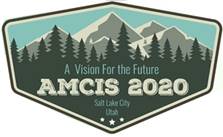Loading...
Abstract
Regardless of their classification and size, organizations face challenges that require the use of Information and Communication Technologies (ICTs) in order to overcome them. Once organizations identify and create their strategy, organization’s strategy alignment with ICTs becomes a necessity. Organizations’ management has different leadership styles that impact their outcomes; in addition, could influence such alignment. Mexican organizations, like their counterparts in other countries, implement controls for their operations. These controls demand strong support of tools that involve ICTs. Consequently, a strong differentiator is the adoption of ICTs that support their substantive work, regardless of its size. What does impact these organizations is the destination given to the investment in ICTs to support their processes. Past research in the strategic alignment of ICTs has made significant progress since the emergence of the Strategic Alignment Model (Henderson and Venkatraman 1993). Talon et al. (2016) proposed an approach, in which the alignment between the ICTs and the organizations’ objectives is given at the process level: lack of ICT support for critical activities in a specific process (ICT Deficit), ICTs fully support the key processes/macroprocesses (Alignment of ICTs), and finally surplus ICT resources (ICT surplus). The latter approach is what the present study uses for alignment measurement Goleman (2000) proposes six styles of leadership, coercive, authoritative, affiliative, democratic, pacesetting and coaching. He argues that, taken individually, they seem to have a unique and direct impact on the work climate of a company, division or team and, in turn, on financial performance. Furthermore, he believes that leaders who used styles that positively affected the climate had markedly better financial outcomes than those who did not. The main argument underlying the studies discussed previously is that organizations will function well when the key ICT resources, infrastructure, associated technical/administrative skills, and knowledge assets are aligned with the organizations’ strategy. The main objective of the present research is to identify whether such alignment is oriented to the macroprocesses/key processes of the organization. Those that are key to the type of strategy defined by the organization, and measure its deficit, alignment or surplus, whether they are applicable. In addition, intends to identify whether the leadership style in the organization influences the degree of alignment and execution of such strategy.
Recommended Citation
Cortes Lopez, Javier Santiago; Gomez Reynoso, Juan Manuel; and Rodriguez-Abitia, Guillermo, "Mexican Organizations: Alignment, ICTs and Leadership" (2020). AMCIS 2020 TREOs. 43.
https://aisel.aisnet.org/treos_amcis2020/43
Abstract Only
When commenting on articles, please be friendly, welcoming, respectful and abide by the AIS eLibrary Discussion Thread Code of Conduct posted here.


